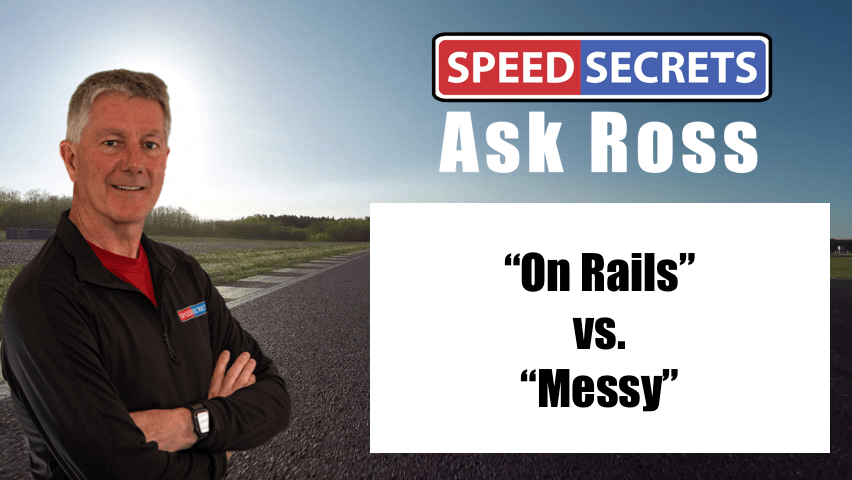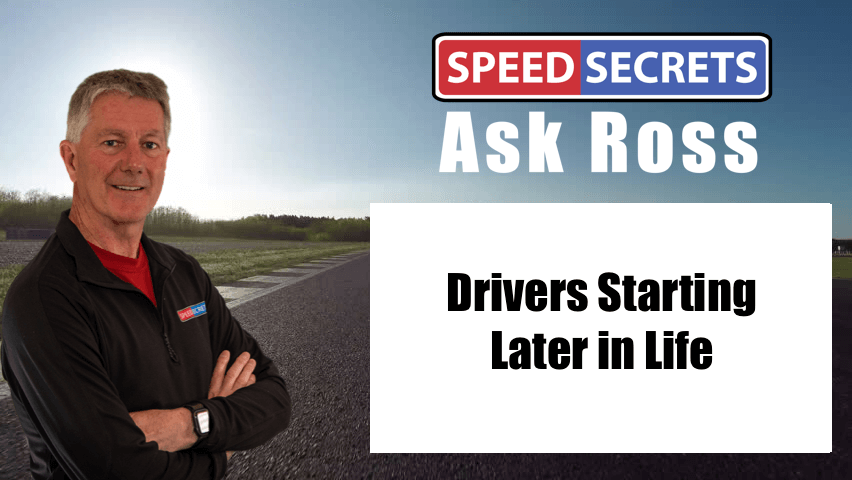by Ross Bentley | Jun 14, 2021 | Ask Ross
Q: “I purchased and watched your “Virtual Track Walk” for Road Atlanta, which was awesome. It helped a lot to prepare me for that challenging track. I was there last weekend for a 3-day HPDE and there was PCA Club Racing too. The races in the rain Saturday afternoon were scary! I have also just finished reading “Ultimate Speed Secrets,” my 3rd book from you. I have a question that I can’t find an answer to specifically, and as it relates to a fast and long straightaway (such as the straight at Road Atlanta from turn 7 to 10A). I have a Porsche 981 GT4, I was going all the way to using 6th gear at about the “bend” at turn 9 to keep the RPM below 7k (peak HP is 6500), and then tried different downshifts for the braking and turn in at 10A. I first went through all the gears on the way down, doing the turn in 3rd. I then tried a down shift to 5th and then short-shifted from 5th to 3rd during the braking. I also tried going straight to 3rd from 6th during the braking, and last, I tried staying in 5th instead of shifting to 6th (had to lift a little to keep it off the redline) and then short shifted to 3rd. I found no “time” differences in any of the options. What technique would you suggest?”
by Ross Bentley | Apr 26, 2021 | Ask Ross
Q: “After many years with BMWs, I’ve gone to the ‘dark side’ and bought my very first American car: a 2021 C8 Vette. My question is, can I take advantage of the 8 gears and dual-clutch with instant rev match to actually up and downshift in the turns? Shifting is reportedly so quick and smooth in both directions that it may seem like steady throttle application. Also, watching the F1 boys, I’m pretty sure I hear them changing gears on entry and exit. Tough to do with a standard six speed, even though heel-toe is second nature.”
by Ross Bentley | Jan 4, 2022 | Ask Ross
Q: “Should I be using the ABS when braking hard for a corner, or apply just enough pressure to stay just before the ABS activates?”

by Ross Bentley | Apr 4, 2023 | Ask Ross
Q: “Should my car feel as though it’s “on rails,” or is being “messy” okay to be fast?
by Ross Bentley | Jan 2, 2024 | Ask Ross, Driving Tips
Q: “One of the things that worries me the most when driving on track is losing my brakes, so I’d like to think ahead and be better prepared for that happening. What should I do if my car loses its brake completely? Should I try downshifting to slow my car? Should I...

by Ross Bentley | Jun 27, 2023 | Ask Ross
Q: “What advice do you have for drivers starting later in life? What tips do you have for managing age-related performance regressions? Do you see things linearly degrading over time? Or is there a point where ability starts to drop off pretty quickly?”


